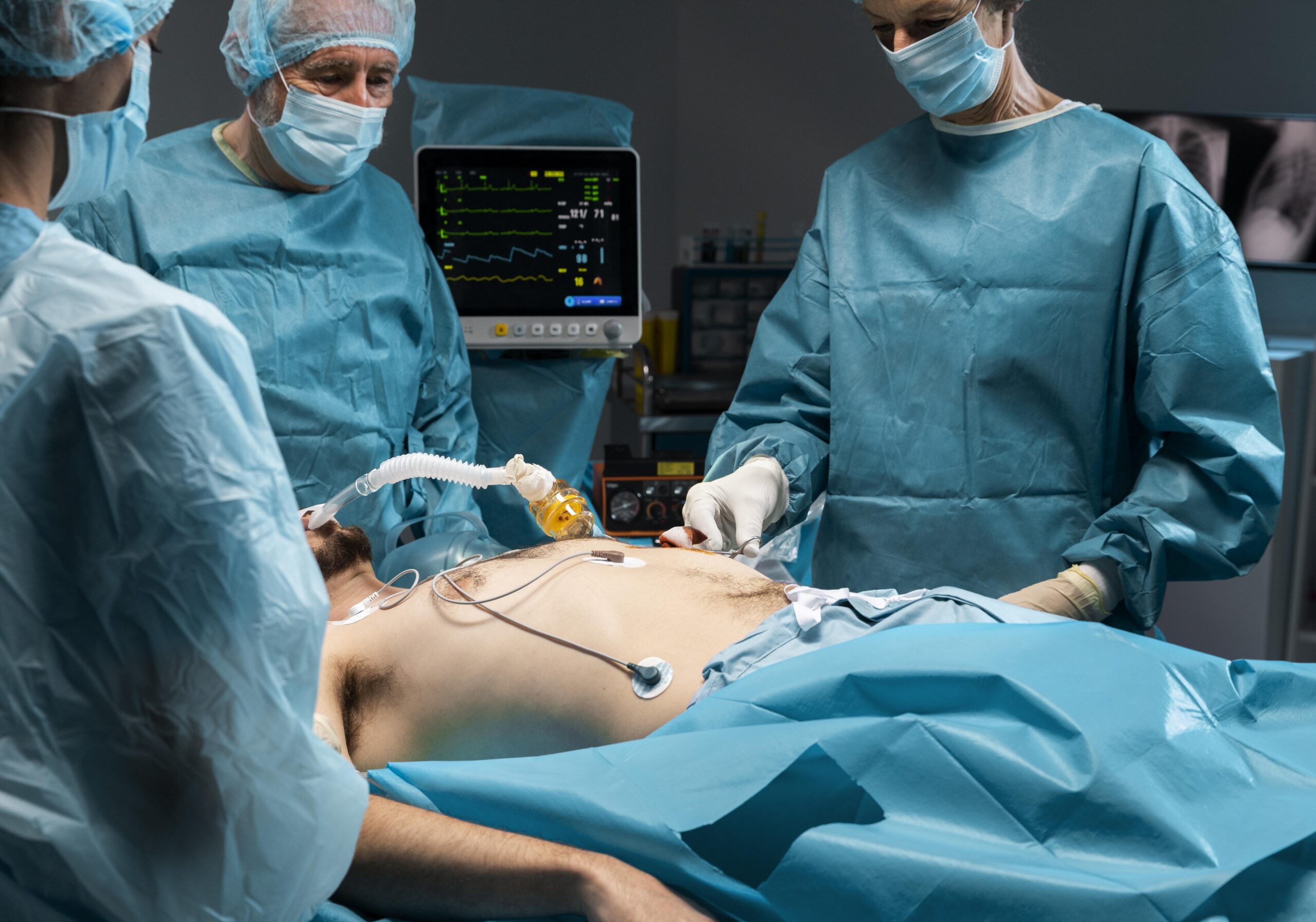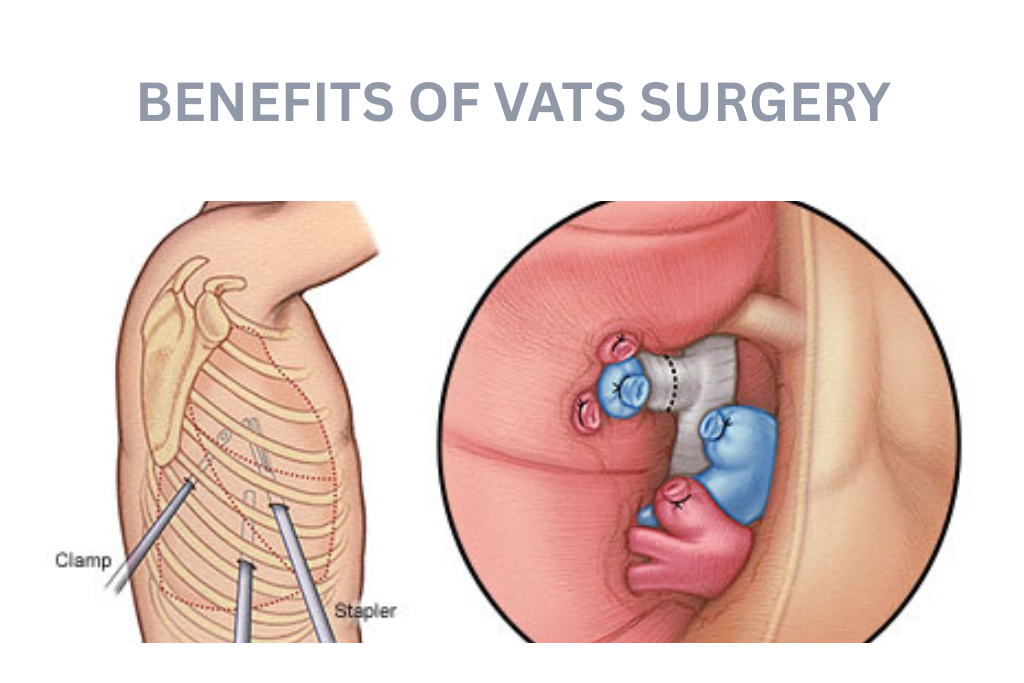
Fear is natural when surgery of the chest or lungs is recommended. Another concern of many patients is pain, long scars, and the duration of recovery. These are honest questions. The good news is that chest operations can nowadays be performed using a safer and less painful technique named Video-Assisted Thoracic Surgery, or as it is more popularly known, VATS.
In simple terms, as it would be described in a clinic, let’s discuss this.
What Is VATS Surgery?
VATS is a chest operation performed with tiny incisions, as opposed to a single large incision. Open surgery required the chest to be opened extensively, the ribs to be unspread, and a long incision to be left behind. The process of recovery was a painful one.
In VATS, only two or three small holes are made. One hole is used for a tiny camera, which shows the inside of the chest on a screen. The other holes are used to insert instruments for the actual surgery.
So, the chest can be operated on without opening it wide. The results are the same, but recovery is much easier.
Why It’s Done
You may wonder, “Why might I need VATS?”
Doctors suggest VATS for many chest and lung conditions. The common ones include:
- Lung cancer (especially early stages)
- Removal of a lobe of the lung (called lobectomy)
- Removal of a small part of the lung (wedge resection)
- Repeated collection of fluid in the chest (pleural effusion)
- Collapsed lung that doesn’t heal with simple methods
- Tumours or cysts in the chest
- Biopsy when the diagnosis is not clear
Therefore, the primary motive is that, in cases where medicines are ineffective and surgery is necessary, VATS is a viable option.
What are the Types of Video-Assisted Thoracic Surgeries (VATS)?
There isn’t just one kind of VATS. There are a few, depending on what needs to be done:
- Diagnostic VATS – Used to look inside the chest or take samples.
- Lobectomy – One lobe of the lung is removed, often for cancer.
- Wedge Resection – A smaller part of the lung is removed.
- Pleurodesis is performed to prevent recurrent fluid accumulation.
- Decortication – Thick layers of infection or scar tissue are removed from the lung.
The doctor decides the type based on the exact disease.
What Happens After Video-Assisted Thoracoscopic Surgery?
Patients often ask, “What happens after the surgery?”
Post VATS, you will be in the recovery room. The chest is minuscule, and a tube is inserted to eliminate any extra air or fluid. The pain is managed using medicines, and plenty of patients consider that the pain was far less than they had imagined.
The following day, you should expect to get up, get active, and start doing breathing exercises. These are important. They assist in the swelling and fast healing of the lungs. Nurses and doctors will monitor your Oxygen level, heart rate, and blood pressure levels. Most people can go home in three to five days.
What Is the Recovery Time?
This is one of the most common questions: “How much time will it take to recover?”
Compared to older open surgery, recovery after VATS is much faster.
- Hospital stay: 3–5 days on average
- Light activity: usually possible in 2–3 weeks
- Return to work: most patients can resume in 4–6 weeks.
Of course, the exact time depends on age, overall health, and what type of VATS was done. But almost everyone feels that recovery is quicker and less painful than they expected.

Benefits of VATS Surgery
The main benefits are:
- Much more minor cuts and scars
- Less pain after surgery
- Shorter stay in hospital
- Faster healing and quicker return to normal activities
- Lower risk of wound infection
- Better breathing comfort after recovery
Possible VATS Surgery Side Effects and Risks
No surgery is entirely free of risks. VATS is very safe, but a few side effects can occur:
- Bleeding
- Infection in the wound or chest
- Air leakage from the lungs
- Short-term breathing problems
- Rarely, there is a need to switch to open surgery if VATS is not enough.
The risk is much lower when an experienced VATS specialist does surgery.
VATS at Surgical Oncology Solutions
At Surgical Oncology Solutions, VATS is performed by senior oncology surgeons with more than 20 years of experience in leading cancer centres across India. The approach is simple: precision in treatment, but also compassion for patients and their families.
Other advanced facilities available include:
- Robotic surgery – For high precision in cancer operations
- HIPEC and PIPAC – Special treatments for advanced abdominal cancers
- Minimally invasive cancer surgeries – For faster healing and less pain
The hospital provides treatment for many cancers, including lung, breast, ovarian, stomach, cervical, colorectal, head and neck, and others.
Consultations are flexible:
- Walk-in visits: Monday to Saturday, 9 am to 5 pm
- Video consultations: Sunday (by appointment)
The aim is not only to treat disease, but also to support recovery and overall well-being.
Final Words
Video-Assisted Thoracic Surgery (VATS) has simplified and reduced the pain experienced in chest operations. This approach enables patients to regain their health more quickly, experience fewer complications, and return to their everyday lives sooner.
The patients are treated with the most modern methods and in a humane manner at Surgical Oncology Solutions. It is not only aimed at curing sick persons, but also makes them well both physically and emotionally.
Frequently Asked Questions (FAQs)
Q1. What is VATS surgery?
It is a type of chest surgery that uses small incisions and a camera, thereby avoiding significant open cuts.
Q2. Why might VATS be needed?
It can be prescribed for cancer of the lung, recurring watery chest, ruptured lung, benign tumour, or biopsy.
Q3. What happens after video-assisted thoracoscopic surgery?
A chest tube is typically inserted, followed by the administration of pain medication, and walking and breathing are initiated the next day.
Q4. What is the recovery time?
The majority of patients will be discharged after 3 5 days and be back at work in 4 6 weeks.
Q5. What are the potential benefits and risks of this procedure?
Smaller incisions, less pain, quicker recuperation, and lower commission. There is the risk of bleeding, infection, air leakage or short-term breathing difficulties.
Q6. Who performs VATS?
A trained VATS specialist (thoracic or oncology surgeon) does it.




